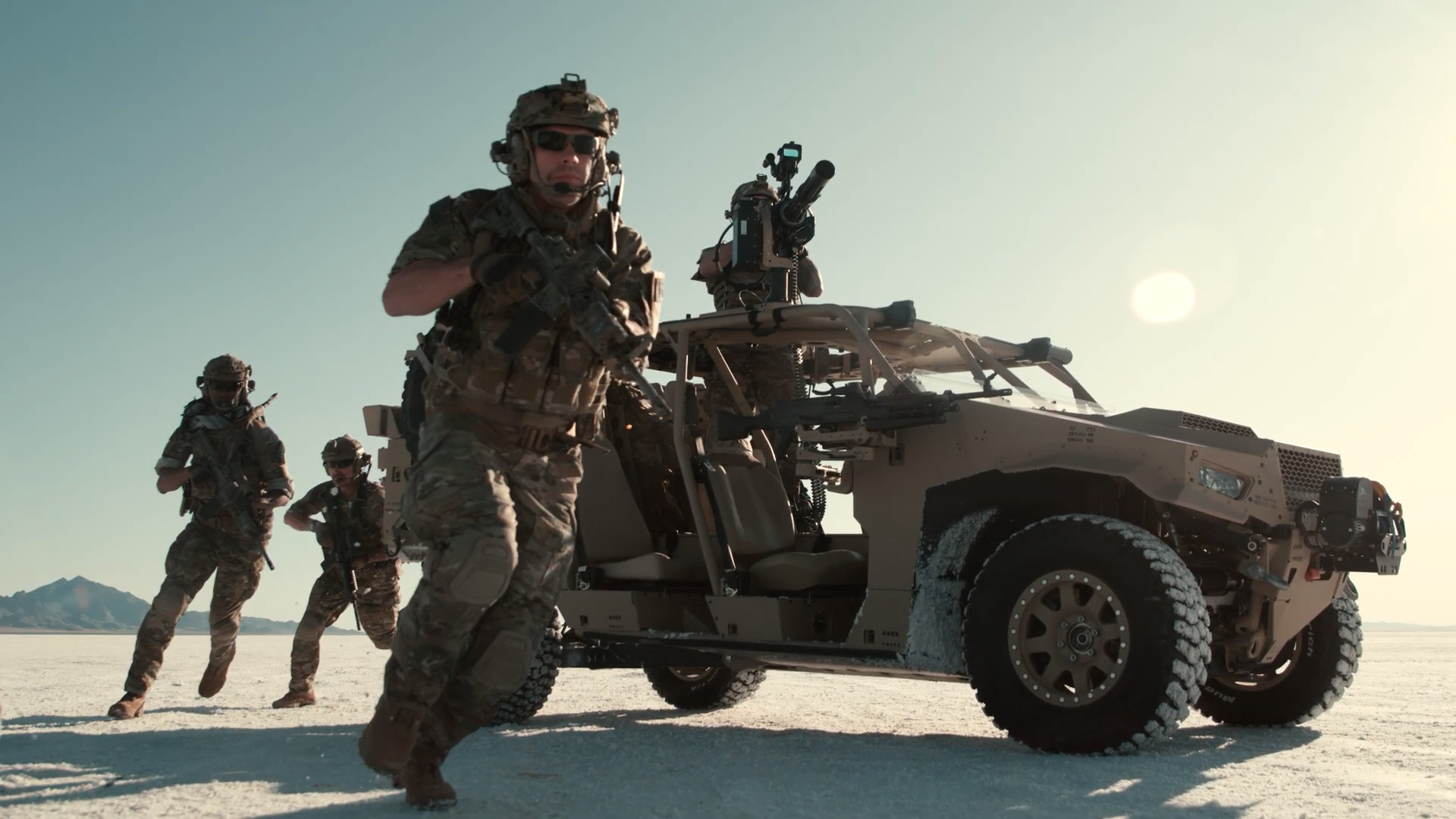
[RYAN ROBERTSON]
TIME NOW FOR OUR WEAPON OF THE WEEK, AND RATHER THAN TAKING A DEEP DIVE ON A SPECIFIC FIREARM OR THE LATEST INNOVATION IN DRONE TECHNOLOGY, WE’RE FOCUSING ON A LONGTIME DEFENSE CONTRACTOR.
SCIENCE APPLICATIONS INTERNATIONAL CORPORATION OR, AS THEY’RE MORE COMMONLY KNOWN, SAIC.
IN THE SIMPLEST TERMS, THEY’RE PROBLEM SOLVERS.
FOR EXAMPLE, THE NAVY NEEDS SOMETHING TO HELP IT DEFEND THEIR SHIPS AGAINST HOUTHI DRONE ATTACKS IN THE RED SEA. OR THE ARMY NEEDS A VEHICHLE THAT CAN HANDLE ROUGH TERRAIN AS WELL AS BE A PLATFORM FOR A VARIETY TECHNOLOGY, BUT THEY NEED IT YESTERDAY.
[Jeremy Davidson]
“You don’t have time to wait on traditional, you know, defense acquisition, right? So you have to be able to move fast agilely and get something out quick, that’s proven tested, and can deliver results. And that’s what we represent.”
[RYAN ROBERTSON]
AT SEA, AIR, SPACE 2024 I HAD A CHANCE TO VISIT WITH JEREMY DAVIDSON, A SYSTEMS ENGINEERING DIRECTOR AND HE WALKED ME THROUGH HOW SAIC IS ABLE TO MEET THE MILITARY’S IMMEDIATE NEEDS..
[Jeremy Davidson]
“We’ve tried to keep an ecosystem, a collaborative ecosystem, both with partners on the business side, but also partners that represent edge systems like you see on this vehicle here. As of today, we’ve got about 30 partners that represent 40 to 45 different technologies.”
[RYAN ROBERTSON]
THE VEHICLE HE REFERENCED IS A POLARIS RAZOR, BUILT-OUT TO HELP GROUND TROOPS ELIMINATE DRONE THREATS.
[Jeremy Davidson]
“What you’re seeing up top is, is an RF detector and an RF effector and jammer is supplied by our partner drone shield. They supply a lot of RF detection and RF affecter equipment, all their product line or is completely integrated. So they’re one of one of our ecosystem partners that we lean on a lot. As we continue around, you’re seeing a product from defend is called the enforce err, this is actually what they call a cyber takeover. So if I see drones that are operating, I know immediately if I can take it over, and I can actually take it over and control the drone myself. And that allows the user to choose what they do with it, they can either land it, bring it to them landed in a safe spot, send it back to where it came from. But at that point, it breaks all communication with the with the actual original hand controller, and it now owns it. ”
[RYAN ROBERTSON]
PART OF SAIC’s APPROACH IS LOOKING AT THE ENTIRE SCOPE OF A REQUEST AND ANTICIPATING HOW THE THREAT MIGHT EVOLVE.
[Jeremy Davidson]
“So being able to pair sensors and sensor data, cameras, laser designators, and non-kinetics, as well as kinetics, small arms, rockets, anything like that, and to the same ecosystem into the same user experience with interoperability is super key, because you don’t know what kind of threat you’re gonna run into. So you need a solution for all threat types. ”







